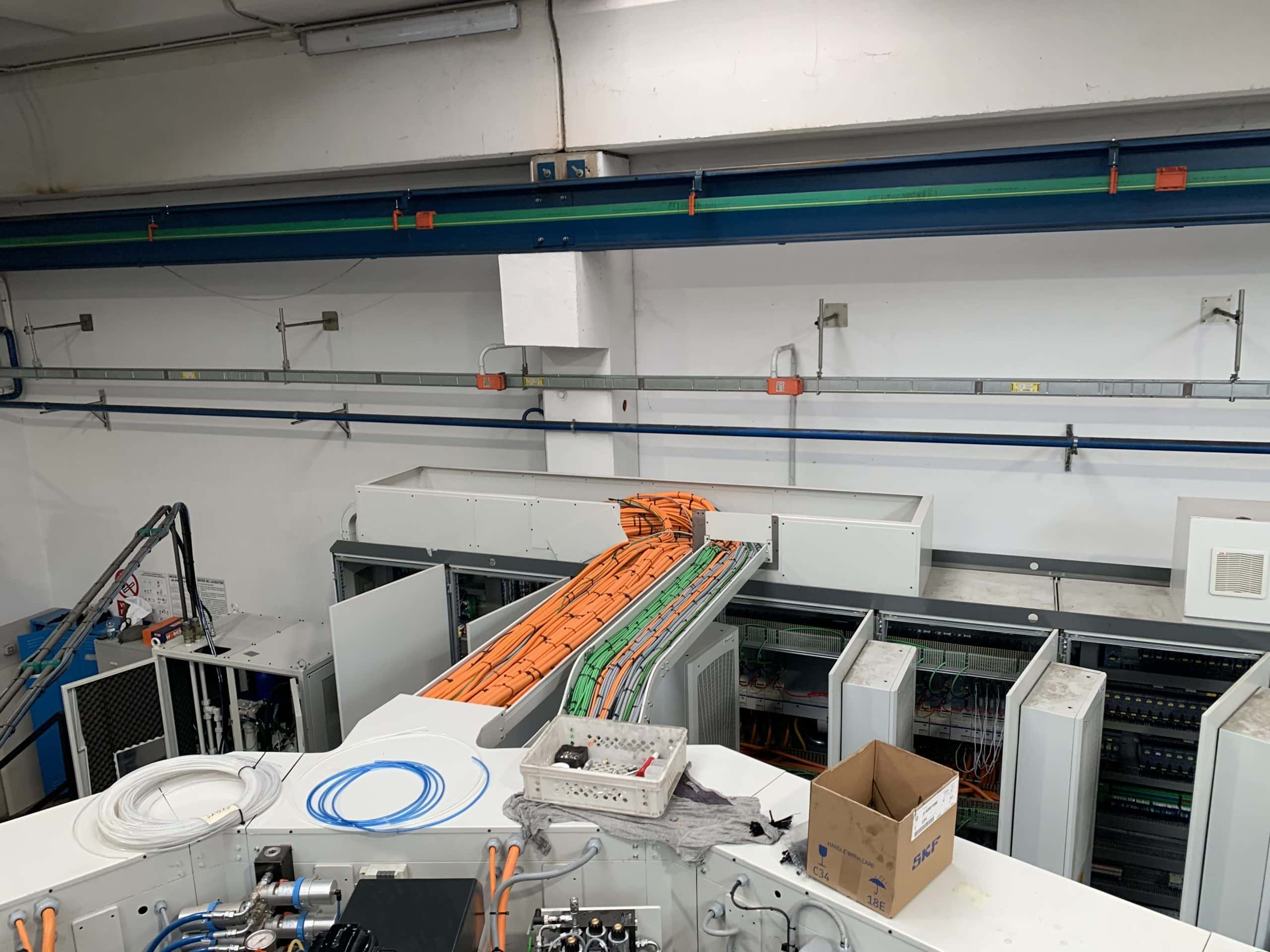Last edit: 24/01/2024

C22.2 N°301 is the reference standard for the Electrical Equipment of Machinery in Canada. Its equivalent in USA is NFPA 79 and internationally it is the IEC 60204-1.
The first edition of a new standard was published in December 2016. The second edition was published in July 2023.
Let’s distinguish immediately between electrical equipment of the machinery and industrial control panels: from January 2022, C22.2 N°286 becomes the reference Standard for the compliance of industrial control panels in Canada, the equivalent of UL 508A for the USA. Previously, the reference standard was C22.2 No. 14: Industrial Control Equipment. On the other hand, until 2021, as reference Standard for electrical equipment and interconnections of industrial machineries the CE Code was used. From January 2022 there is a new reference Standard to refer to: C22.2 N° 301 whose name is Industrial Electrical Machinery.
C22.2 N°301 is applicable to machinery comprising interconnected mechanical, electrical, or electronic industrial equipment operating in a coordinated manner. It also applies to equipment rated at not more than 1000 V intended to be installed and used in non-hazardous locations in accordance with the rules of the Canadian Electrical Code, Part I.
[C22.2 N°301: 2023] This Standard is intended to specify the applicable electrical requirements for industrial machinery needed to satisfy the electrical installation codes and practices for Canada. When third-party verified and appropriately marked as meeting the requirements of this Standard, the machinery is deemed compliant for installation in a non-hazardous location in accordance with the rules of the Canadian Electrical Code, Part I, and to be acceptable to the electrical authority having jurisdiction. This Standard is intended to be used in conjunction with the Canadian Electrical Code, Part I where all mandatory installation requirements for Canada are specified.
Beyond Electrical Safety, the standard stresses the importance to refer to Z432 for risk assessment and Risk Reduction and to the International Functional Safety Standards like ISO 13849-1 and IEC 62061.
[C22.2 N°301: 2023] Machinery can pose many other hazards in addition to electrical hazards. As such, users of this Standard should be aware that Canadian federal, provincial, and territorial legislation can impose additional requirements beyond those for electrical safety, and that those requirements can vary from jurisdiction to jurisdiction. Some of this legislation is based on requirements in CSA Z432 that specify conditions for the risk assessment, design, manufacture (including remanufacture and rebuilding), installation, maintenance, operation, and safeguarding of industrial equipment to prevent injuries and accidents and enhance the safety of personnel who operate, assemble, and maintain the machinery. This Standard should be used in conjunction with CSA Z432 to ensure compliance with any legislated non-electrical aspects of machine safety. This Standard should be used in conjunction with CSA Z432 (for the mechanical risks) to also ensure compliance with any legislated non electrical aspects of machine safety.
Major changes compared to the 2016 Edition.
The following are the major changes to this edition:
- The Scope was expanded to include industrial robots and industrial robotics equipment;
- New construction requirements related to temperature, enclosures, insulating materials, electrical spacings, and wet or outdoor locations were introduced;
- New electrical supply requirements, such as requirements for terminations, batteries, and battery circuits were introduced;
- Surge protections (SPDs) applicable to industrial machineries are now discussed in the standard;
- EMC requirements are now better defined in Annex E;
- New bonding requirements for non-metallic enclosures;
- New marking requirements for wiring terminals;
- New type test requirements for battery overcharge test, breakdown components test, strain relief test, flexing test, and stability test; and
- Introduction of Annex D related to additional requirements for industrial robots and industrial robotic equipment.
The EMC Modular Approach.
In the 2023 edition of the C22.2 N° 286 the modular approach for EMC compliance was introduced. In essence, no EMC tests are required in case all components used are suitable for the EMC, they are connected as recommended by the component manufacturer and the wiring practices, as indicated in the Annex H of the IEC 60204-1, are followed
[C22.2 N°301: 2023] Annex E: Electromagnetic compatibility (EMC)
Immunity and/or emission tests shall be performed on the electrical equipment unless the following conditions are fulfilled:
- the incorporated devices and components comply with the EMC requirements for the intended EMC environment specified in the relevant product standard (or generic standard where no product standard exists); and
- the electrical installation and wiring are consistent with the instructions provided by the supplier of the devices and components regarding mutual influences (cabling, screening, earthing, etc.) or with Annex H in IEC 60204-1 if such instructions are not available from the supplier.